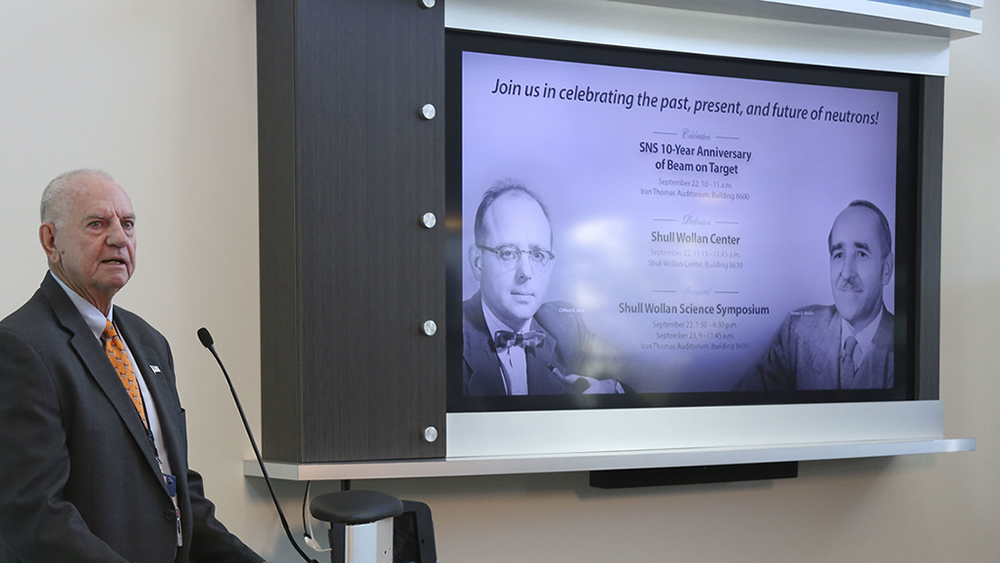September 22, 2016

The Spallation Neutron Source marks a decade as a leading neutron science facility today at the Department of Energy’s Oak Ridge National Laboratory.
“The Spallation Neutron Source has opened neutron scattering science to a new generation of researchers at a time when advanced materials are critical to solving our challenges with energy and the environment,” said ORNL Director Thom Mason, who led the SNS project to its completion in 2006.
The SNS’s combination of linear accelerator and accumulator ring sent its first protons to its one-of-a-kind mercury target in April 2006, beginning a process of commissioning instruments to take advantage of its unprecedented abundance of pulsed neutrons for research.
A decade later, the SNS, which is a DOE Office of Science user facility, has attracted researchers from around the globe to study materials with neutrons at peak intensities previously unavailable. Neutrons’ properties make them ideal for studying the molecular and atomic structure of materials in ways not possible with other probes, such as phonons and electrons.
Research from the SNS has bolstered the pace of materials sciences advances as scientists gain more understanding of the physical forces at the molecular level that drive properties of advanced materials that could, in the near future, result in new and disruptive technologies.
Over its 10 years of science the SNS has attracted thousands of scientific users and resulted in more than 1,800 peer-reviewed publications.
The SNS, which was built by a consortium of six DOE national laboratories, established a number of records in its construction and operation, including the first use of a liquid mercury target for a neutron production, the highest ever beam power to a neutron production target by any accelerator complex and the highest performing negative hydrogen ion source.
The tenth anniversary celebration takes place in conjunction with a ceremony dedicating the renamed Shull Wollan Center — a Joint Institute for Neutron Sciences, recognizing two scientists who pioneered a field of science that has become a key tool for scientific and technological advancement.
Earlier this year the University of Tennessee Board of Trustees added the names of Clifford Shull and Ernest O. Wollan to the state-funded Joint Institute for Neutron Sciences, which it operates in partnership with DOE and ORNL adjacent to the SNS. The renaming honors the pair for their early work in neutron scattering during ORNL’s earliest years.
“We are particularly pleased to recognize two visionaries who helped introduce the scientific community to the vast potential of neutron scattering,” Mason said.
During World War II, Wollan was a researcher working on the top-secret Manhattan Project in Chicago, and then asked to design the health physics program for the secret work at Oak Ridge. As the original mission was completed, Wollan proposed diffractometry experiments with neutrons produced by the Graphite Reactor. Clifford Shull soon joined him in expanding the peacetime scientific role of the reactor.
Shull eventually shared the Nobel Prize for Physics in 1994 for his role in the development of neutron scattering, years after Wollan’s death. Several members of the Shull and Wollan families are attending today’s ceremonies.
Later in the day, the inaugural Shull Wollan Science Symposium will begin at the SNS’s Iran Thomas Auditorium with a slate of lectures related to neutron science.
Guest lecturers for the Shull Wollan Science Symposium, which runs until Friday, include Alan Tennant, chief scientist for ORNL’s Neutron Sciences Directorate; Roger Pynn, Indiana University at Bloomington; Takeshi Egami, UT-Knoxville and joint faculty with ORNL; Stephen Nagler, ORNL; Sunil Sinha, University of California, San Diego; and Geoffrey Greene, UT and ORNL.